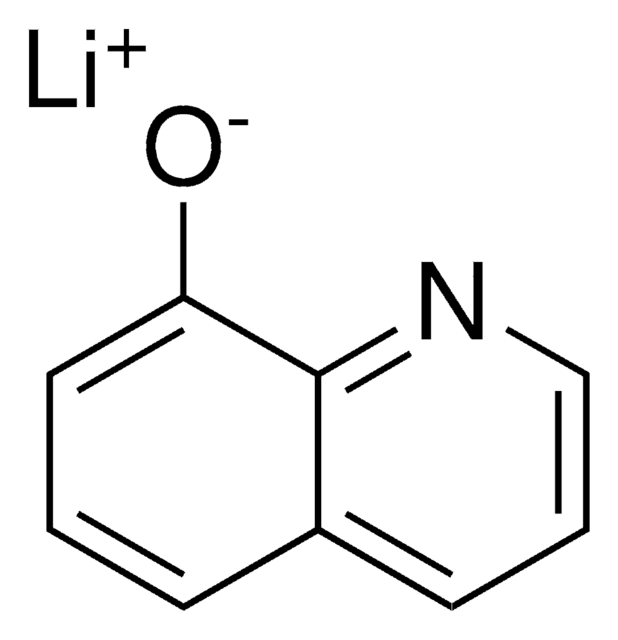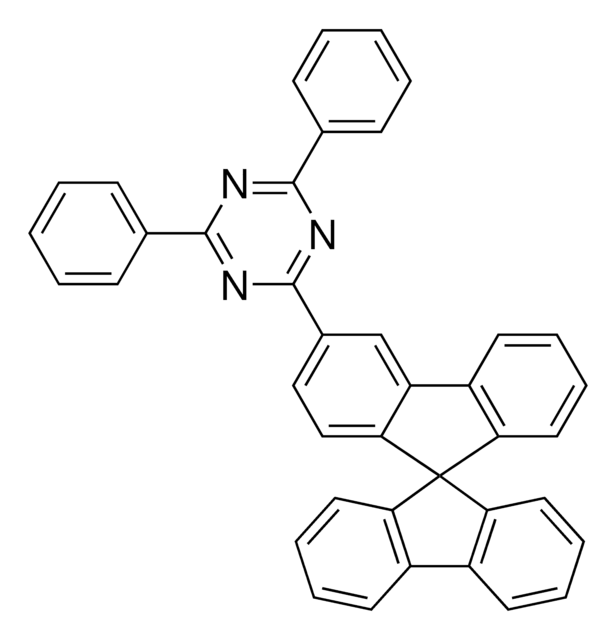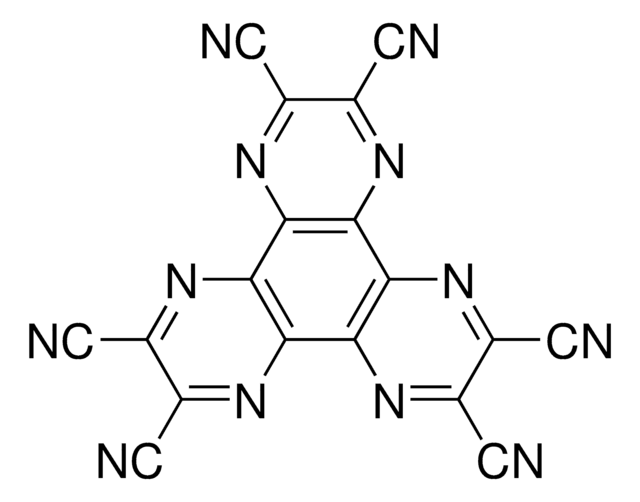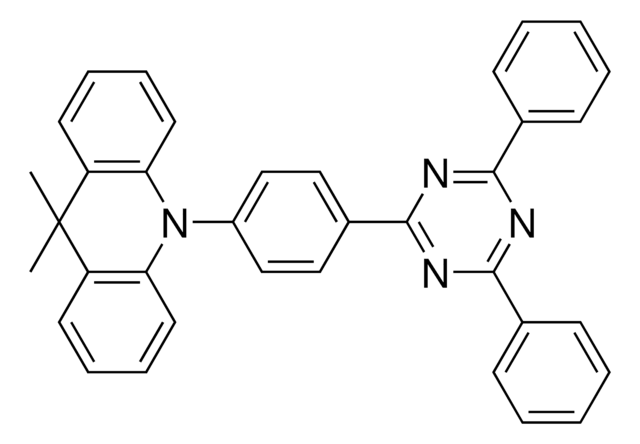Key Documents
925756
N-([1,1′-Biphenyl]-4-yl)-9,9-dimethyl-N-(4-(9-phenyl-9H-carbazol-3-yl)phenyl)-9H-fluoren-2-amine
≥97%
Synonim(y):
BCFN
About This Item
Polecane produkty
opis
PL: 413 nm (in DCM)
Poziom jakości
Próba
≥97%
Postać
powder
kolor
white to yellow
Energia orbitalna
HOMO 5.3 eV
LUMO 3.2 eV
λ
in dichloromethane
absorpcja UV
λ: 353 nm Amax
InChI
1S/C51H38N2/c1-51(2)47-19-11-9-17-43(47)44-31-30-42(34-48(44)51)52(40-26-21-36(22-27-40)35-13-5-3-6-14-35)41-28-23-37(24-29-41)38-25-32-50-46(33-38)45-18-10-12-20-49(45)53(50)39-15-7-4-8-16-39/h3-34H,1-2H3
Klucz InChI
GJWBRYKOJMOBHH-UHFFFAOYSA-N
Zastosowanie
BCFN is a good morphologically stable material with Tg of 125 °C and Td of 375 °C.
With a ET of 2.58 eV, BCFN is also a very good charge transporting layer material due to its large band gap (Eg = 3.1 eV) 2 for green, red and white phosphorescent organic light-emitting diodes (PhOLEDs).
OLED Device Performance:
BCFN increase the hole transport mobility of PVK (pure PVK: 2.09×10-9 V cm-1 S-1; 30% of BCFN in PVK: 9.86×10-7 V cm-1 S-1; 50% of BCFN in PVK: 1.15×10-5 V cm-1 S-1):
1. ITO/PEDOT:PSS (40 nm)/PVK:BCFN (3:7, 20 nm)/BCFN:PFO (x:1-x, 80 nm)/CsF (1.5 nm)/Al (120 nm)
Color: Blue
BCFN in combination of ET1 to act as EML in forming exciplex and improve device performance:
2. ITO/HIL/HTL/(ET1+P1) or (ET1+BCFN+P1(doped)/ETL/ LiF/Al
Color: red
Device emission area of 81cm2, and at 1000 cd m-2, the efficiency exceeds 200 lm/W and the EQE exceeds 50 %.
lifespan@95: from 71h to 133h
BCFN in combination with Ir(piq)2(acac) as electron scavenger layer:
3. ITO/NDP series in BCFN (3wt.%, 10nm)/BCFN(160nm) or BCFN(130nm)+BCFN:Ir(piq)2(acac)(2wt.%, 10nm)+BCFN(20)/ [Ir(TMSBppy)ppy2]:BPTZBC (10 wt.%, 40nm))/ TPBi:Liq (1:1 wt. % ratio, 36nm)/ Liq (0.1nm)/Al (60 nm)
Color: yellow
Efficiencies are not affected.
lifespan@95: from 71h to 133h
Kod klasy składowania
11 - Combustible Solids
Klasa zagrożenia wodnego (WGK)
WGK 3
Wybierz jedną z najnowszych wersji:
Certyfikaty analizy (CoA)
Przepraszamy, ale COA dla tego produktu nie jest aktualnie dostępny online.
Proszę o kontakt, jeśli potrzebna jest pomoc Obsługa Klienta
Masz już ten produkt?
Dokumenty związane z niedawno zakupionymi produktami zostały zamieszczone w Bibliotece dokumentów.
Nasz zespół naukowców ma doświadczenie we wszystkich obszarach badań, w tym w naukach przyrodniczych, materiałoznawstwie, syntezie chemicznej, chromatografii, analityce i wielu innych dziedzinach.
Skontaktuj się z zespołem ds. pomocy technicznej
![Di-[4-(N,N-di-p-tolyl-amino)-phenyl]cyclohexane ≥97% (HPLC)](/deepweb/assets/sigmaaldrich/product/structures/111/787/16bde1ce-c76d-46d6-9e1f-9ce09f82d038/640/16bde1ce-c76d-46d6-9e1f-9ce09f82d038.png)

![Tris[2-(p-tolyl)pyridine]iridium(III) ≥99% (HPLC)](/deepweb/assets/sigmaaldrich/product/structures/207/957/bb807380-3690-46c2-809e-e6bc2ba29fa5/640/bb807380-3690-46c2-809e-e6bc2ba29fa5.png)





